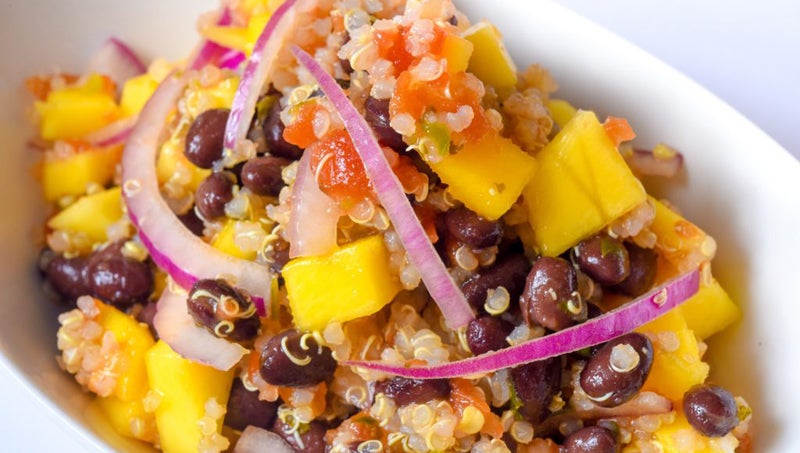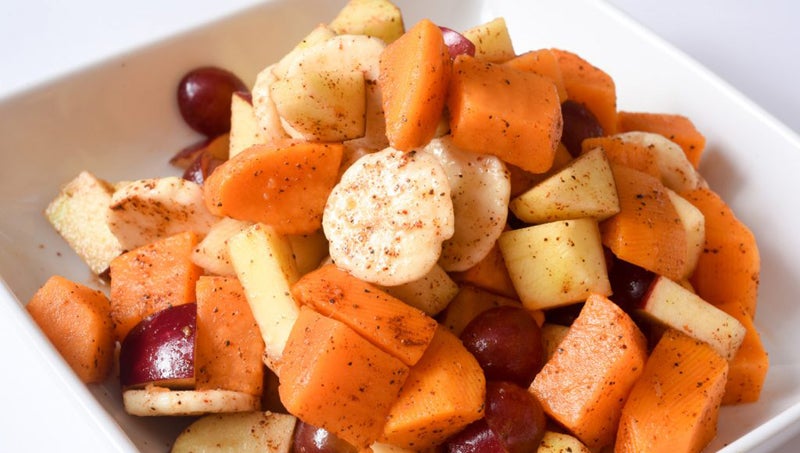Eat more fruits and vegetables!
Published 6:43 pm Friday, February 28, 2020
LOUISE HINSLEY
There can be a lot of misinformation and confusion about nutrition. However, eating more fruits and vegetables is one thing that most all dietary patterns, nutrition experts and medical professionals can agree upon. This is because there is so much evidence to support the benefits of a diet heavy in fruits and vegetables. The Mediterranean pattern of eating focuses eating a variety of colors of fruits and vegetables every day.
Current research that looks at the importance of fruits and vegetables with respect to weight found that as fruit and vegetable intake goes up, weight goes down. The items that were found to be associated with a lower weight (i.e. weight busters) were: berries, apples and pears, cruciferous vegetables, green leafy vegetables and all other fruits and non-starchy vegetables. The two vegetables that were not found to be protective against a higher weight were corn and potatoes. These starchy vegetables are two of the most popular choices in the United States (potatoes being the No. 1 vegetable consumed in the U.S). Thus, we need to not only consume more fruits and vegetables, but we need to focus our attention away from the starchy choices that are so popular in our country and toward other vegetables that have greater health benefits.
We need to plan, shop and prep in order to eat more vegetables! Get at least three servings (cups) of vegetables per day. Choose a variety of colors and eat more of the dark green leafy vegetables such as collards, kale, spinach and turnip greens. Not only are the colors beautiful but, each color has different vitamin and minerals. We also need to eat more fruit. Get at least two servings (cups) of fruits per day. Again, choose a variety of colors and be sure to Include berries.
Buying fruits and vegetables that are in season can help you save money. Canned and frozen products can be great budget-friendly options to get more fruits and vegetables on to your plate. Canned and frozen fruits and vegetables have long shelf lives and can be great on-hand ingredients to keep in your pantry or freezer. When shopping you will want to read labels on the cans and packages. Try to choose frozen vegetables and fruits that have no added sugar or salt. Another method to help reduce the salt in canned vegetables is to drain and rinse well after opening to reduce an additional 30% of the salt that was added for packaging. Always choose canned fruit packed in water or its own juices.
Make fruits and vegetables convenient. Prep, prep, prep! Make sure that fruits and vegetables are ready to go when you need them. Have fruit washed — the exception is berries, as you want to wash them just before serving. Leave other washed fruit in a bowl on your counter or table so that you remember to grab some when you are hungry or heading out the door.
Include cut fruits and vegetables in your lunch. Packing your lunch with ready-to-eat produce (whether you bought it that way or prepped it yourself) will make you more likely to eat it. Pre-prepped produce will make eating fruits and vegetables more convenient. You can prep produce in advance yourself, buy items that are already pre-prepped or do a little bit of both. The key is to find what works for you. If pre-prepping produce yourself, recruit a family member to help.
The evidence is clear: our diets (and our plates) should be built around fruits and vegetables. Fruit and vegetable consumption helps protect against chronic disease and obesity. Here are couple of tasty recipes to encourage your family to eat more fruits and vegetables!
Mango, Black Bean, and Quinoa Salad
Super easy, quick, and delicious.
Serves 6
Serving size: ¾ cup
Prep time: 20 minutes
Total time: 20 minutes
Ingredients
1½ cups chopped, peeled ripe mango; 1(15-ounce) can no-salt added black beans, rinsed and drained; ½ cup cooked quinoa; 1 cup thinly sliced red onions; 2 tablespoons extra-virgin olive oil; 2 tablespoons fresh salsa; 2 tablespoons lime juice (approximately 1 lime); ¼ teaspoon salt; and ¼ teaspoon black pepper
Directions
Combine all ingredients in a large bowl and toss gently. Serve immediately, or chill until serving.
Nutrition information per serving: serving size, ¾ cup; vegetables, ⅓ cup; fruits, ¼ cup; calories, 168 calories; carbohydrates, 25 grams; fiber, 7 grams; protein, 6 grams; fat, 6 grams; and sodium, 200 mg.
Fruit Chaat
This is an Indian-style sweet and savory snack that is super easy to prepare. You can vary the fruits to your liking and what’s readily available.
Serves 6
Serving size: ¾ cup
Prep time: 20 minutes
Total time: 20 minutes
Ingredients
2 medium bananas, peeled and sliced; 1 medium apple, chopped into small pieces; 1 mango, peeled and cut into small cubes; 1 cup halved red grapes; 1 medium sweet potato; 1 – 2 limes; ½ teaspoon salt (adjust to taste); ½ teaspoon red chili powder (adjust to taste) and ¼ teaspoon black pepper (adjust to taste)
Directions
Poke holes in the sweet potato and microwave for 5-8 minutes, rotating half way through. Allow to cool, peel and cut into small cubes. Combine banana, apple, mango, grapes and sweet potato in a big mixing bowl. Squeeze juice from limes into mixture and toss. Mix in the salt, chili powder and black pepper.
Nutrition information per serving: (Based on 2 limes, ½ teaspoon salt, ½ teaspoon red chili powder, and ¼ teaspoon black pepper)serving size, ¾ cup; vegetables, ¼ cup; fruits; ½ cup; calories, 104 calories; carbohydrates, 20 grams; fiber, 3 grams; protein, 1 gram; fat, 0 grams; sodium, 211 mg.
Source for this article is the North Carolina Cooperative Extension Meds Instead of Meds educational program. For more information about the foods and nutrition, contact Louise L. Hinsley at the Beaufort County Center of N.C. Cooperative Extension, 155 Airport Road, Washington, 252-946-0111. Be sure to like the Beaufort County FCS Facebook page for upcoming classes.
Louise Hinsley is the Family Consumer Science extension agent at Beaufort County Cooperative Extension.






